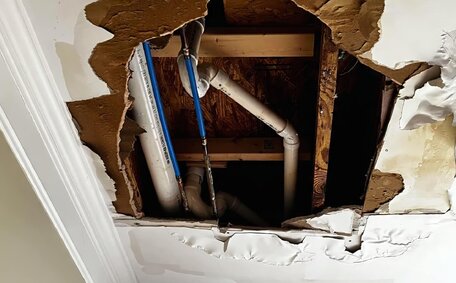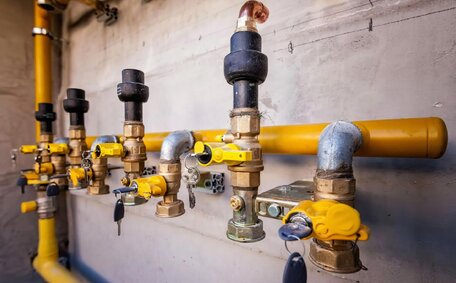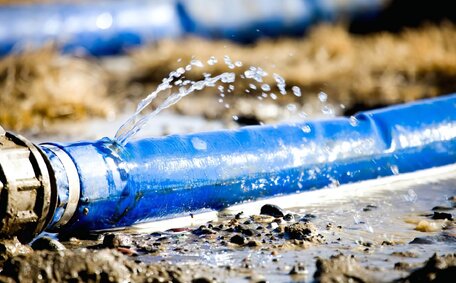Introduction: Understanding How and Why to Turn Off Your Gas Supply
Understanding how to securely switch off your gas supply is a vital skill for homeowners and business proprietors alike.
Turning off your gas is necessary during repairs, in emergencies, through severe weather, or before long absences.
Being able to quickly locate and turn off your gas is crucial for managing potential gas-related issues.
Quick action using this knowledge can avert dangers from leaks or similar hazards. Equally, it enables basic troubleshooting and aids coordination of external repairs.
This guide will teach you how to manage your gas supply, outlining steps to identify and manage it either via the external gas meter or the internal main shut-off valve.
Locating Your Gas Meter and Identifying the Shutoff Valve
For many Australian residences, the natural gas meter box sits at the front, close to the wall or fence. It may be enclosed in a metal box labelled "Gas Metre". Commercial properties often have their gas meter on the side exterior wall closest to the street.
The gas meter gauges and controls the gas flow into your property. Beside the meter dial is a valve, a tap or lever, that you can manually operate to halt the gas flow. Turning off this valve ceases the flow of gas to the premises.
Natural gas meter shutoff valves typically have a metal cap labelled 'Emergency Shut-Off’, while LPG meters have an exposed valve on top of the cylinder. In either case, these valves allow you to swiftly shut down gas flow in the event of an emergency or for maintenance purposes.
Preparing to Turn Off Gas: Safety Steps and Precautions
Before attempting to turn off gas supply, be sure turn off all necessary appliances and follow these safety steps:
- Ensure all the pilot lights on your gas appliances are turned off. This includes your hot water system, heaters, stoves, ovens and any related fixtures.
- Ensure no appliances, including water heaters, are actively using gas. Wait until the hot water system and any appliances have fully shut down before proceeding.
- Open all windows to ventilate the area, especially crucial when turning off the gas supply. This allows any residual off gas supply your home to dissipate.
- Keep an adjustable spanner and torch handy for accessing and turning off the gas meter or shut-off valve.
- Ensure you know where the shutoff valve is located near your meter for quick access in an emergency.
- In a gas emergency, if you suspect a gas leak, never use matches, lighters or create sparks which could ignite leaking gas. Evacuate the area and call 000 for emergency assistance.
Taking these precautions before turning off gas at the gas main is a good idea to ensure your safety during this process. It prevents potential hazards like gas buildup or explosions from unextinguished pilot lights.
Step-by-Step Procedure for Turning Off Natural Gas at the Meter
Follow this procedure to ensure safe work on gas systems and to turn off the natural gas supply at your gas metre, including extinguishing any appliances pilot lights:
- Ensure all gas supply your appliances and pilot lights in the home are switched off.
- Take an adjustable wrench and flashlight to locate your gas meter outdoors.
- Remove the "Emergency Shut-Off" cap to access the valve tap and switch the gas supply off.
- Insert spanner onto the valve tap and turn tap it a quarter-turn clockwise to the off position so the tap is perpendicular to the pipe. This action can sometimes demand a bit of force to halt the supply.
- Check for the sound or smell of gas. If present, further tighten the valve until the gas flow stops.
- Securely reposition the "Emergency Shut-Off" cap over the supply pipe valve.
Once the main valve at the meter is closed, it stops the flow from the gas retailer, severing your supply. Remember this will shut down appliances like hot water systems until the gas is turned back on.
If you cannot stop the gas flow via the meter valve, evacuate immediately and contact the gas company or check our website for further guidance. Similarly, shut off your gas and focus on safety if you detect a significant gas leak.
Shutting Off an LPG Gas Cylinder Supply
Handle LPG cylinders with care, as your safety is vital when operating the shut-off valve on top of the cylinder. Follow these instructions to safely turn off your LPG cylinder:
- Ensure all gas appliances, like stoves and hot water services, are turned off.
- Locate the LPG cylinder. It is typically situated outside, often on a concrete pad or stand.
- Spot the shut-off valve jutting out vertically from the top cylinder. This appliance shutoff valve tap empowers you to halt the gas supply.
- Use an adjustable wrench to tighten the top cylinder clockwise via the valve until firm and perpendicular to the cylinder, stopping the gas flow.
- To confirm gas flow has ceased, spray soapy water around valve connections and check for bubbles.
- Notify occupants that gas appliances will be inoperable until cylinder valve is reopened.
Switching off the LPG cylinder valve stops the gas to the premises, impacting all connected services. Appliances will not ignite or heat until the gas is turned back on. Remember this vital precaution if ever disconnecting or moving gas cylinders.
Turning Your Gas Supply Back On: When and How
After repairs or maintenance, restore gas to your appliances by reopening it at the meter shutoff valve or LPG cylinder valve.
Follow these safety steps before reopening your gas line flow:
- Inform any occupants that the gas will be turned back on following the shutdown process.
- Make sure all gas appliances are off before you restore the supply.
- Inspect all fittings, including water pipe connectors, for leaks with soapy water once the gas is active.
- Gradually reopen the gas valve at the meter or on the LPG cylinder.
If you smell gas after restoring supply, immediately recap the valve and call our office on 1300 349 338. A licenced technician will inspect your fittings and connections for leaks.
After natural disasters, qualified gas fitters must inspect meters and appliances to safely relight pilot lights. Contact us after bushfires or floods.
To carry out comprehensive gas servicing and repairs, embracing the assessment of gas appliances pilot operations, Lindfield Plumbing provides dependable solutions. Email or call our team if ever unsure about managing your gas supply.
Preventing Gas Leaks and Ensuring Proper Ventilation
There are several key steps you can take to help prevent gas leaks and ensure proper ventilation in your home or business:
- Conduct regular visual inspections of your gas pipes, networks, systems and fittings. Check for signs of corrosion, cracks, damage or leaks. Contact a professional immediately if you suspect an issue.
- Have all your gas lines and appliances serviced by a licensed gas fitter every 2 years as per regulations. They will safety check pipes, fittings and carbon monoxide levels.
- Keep the gas metre area clear of debris, vegetation and potential ignition sources. This ensures you can turn off all access in the event of an emergency.
- Maintain adequate ventilation around gas appliances like heaters, stoves and hot water systems so that carbon monoxide does not accumulate.
- Install and routinely check carbon monoxide detectors for early leak detection. Do not ignore warnings.
- If you ever detect a gas smell, extinguish all flames and turn off appliances immediately. Open windows to ventilate then shut off gas supply at the main valve.
- You should turn off any electrical devices, like light switches, near a suspected gas leak, as sparks could ignite the gas.
- Consider installing an emergency shutoff valve between meter and appliances as an additional safety precaution.
Taking preventative measures over time allows you to identify and address gas leaks early before they become dangerous. Proper ventilation also dissipates gas accumulation. Contact Lindfield Plumbing on 1300 555 1234 if you have any concerns about gas safety in your home or business.
Gas Shutoff During Emergencies Like Bushfires
Understanding how to control your gas is critical in emergencies like bushfires to protect life and property. An important step is learning how to safely shut off your gas supply.
If evacuation orders are issued in your area due to an encroaching bushfire, or if you smell gas and suspect fire damage to gas infrastructure, you should immediately turn off the gas at the metre or LPG cylinder.
- Ensure all occupants safely evacuate the property first.
- If safe to do so, access the gas metre or LPG cylinder following the shutoff procedures outlined earlier.
- Use a spanner to turn the gas valve fully clockwise to the off position.
- Clearly mark the gas metre with a notice that the gas is shut off, in case of fire crew attendance.
- Evacuate to your emergency meeting point, preventing re-entry until emergency services issue an all-clear.
Where fire crews have attended gas infrastructure, Certified gas fitters must ensure system safety before anyone can close valves and relight the system. Never attempt to reconnect gas supplies yourself after a bushfire or other emergency. Contact our office on 1300 349 338 for assistance.
In an emergency, acting swiftly could save both lives and property through gas shutoff. Ensure all occupants know where and how to safely turn off the gas at your metre or LPG cylinder.
Calling a Professional Plumber for Help
In certain situations, it’s crucial to call a licenced professional plumber for assistance with managing your gas supply, rather than attempting to address issues on your own.
You should contact a plumber immediately if:
- You smell gas or suspect any kind of leak
- You are unable to locate or access the gas metre shutoff valve
- The valve is stuck or damaged and you cannot turn off gas flow
- Pilot lights repeatedly go out after you attempt to relight them
- Gas appliances are malfunctioning despite the supply being on
- You have no gas supply but all valves/switches are on
- You have attempted to restore your gas supply after an emergency but smell gas or appliances won’t ignite
- You require gas repairs after storms, floods or bushfires
In such scenarios, it’s unsafe and typically illegal for those without qualifications to tackle gas systems. Gas fitting requires extensive training and licencing for legal compliance.
As experienced licensed gas fitter professionals, Lindfield Plumbing’s team can quickly inspect issues and safely restore your gas supply. Contact us on 1300 555 1234 or email for reliable, emergency assistance. We’re always ready to help.






